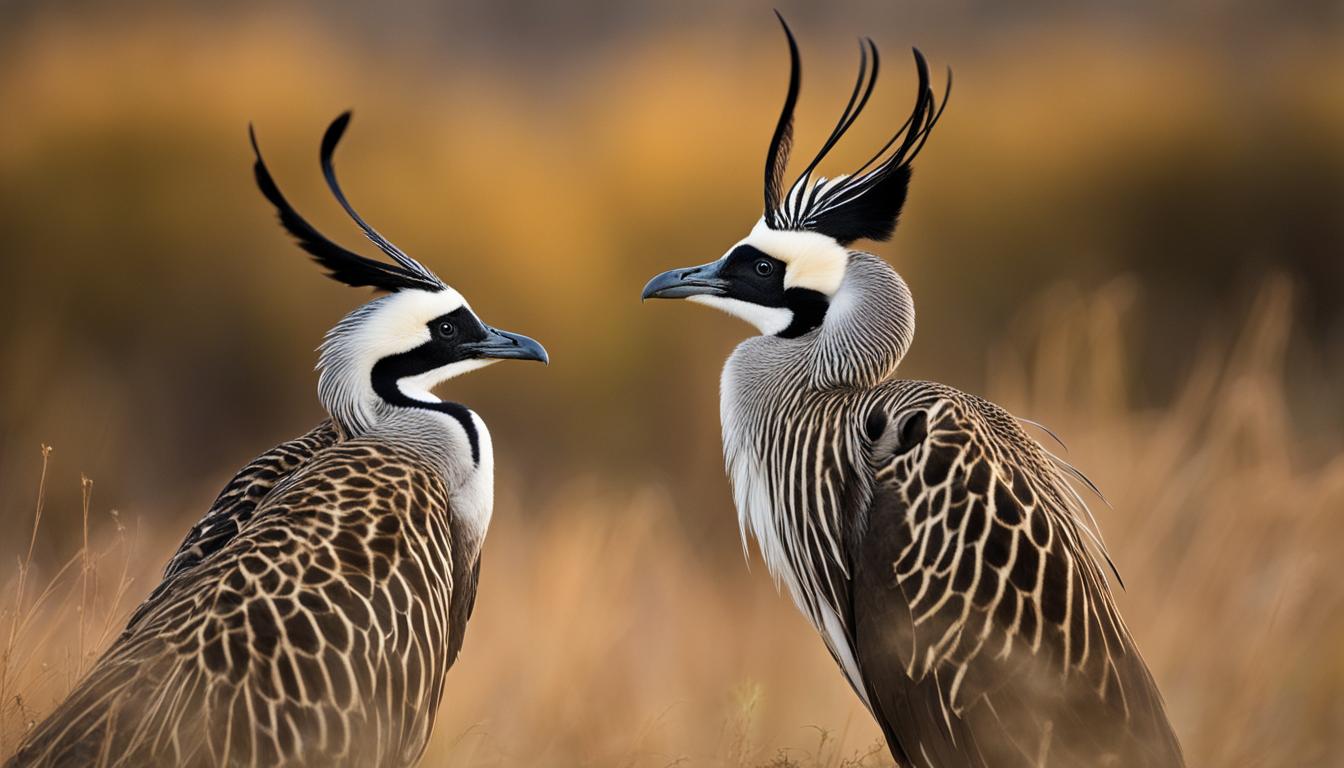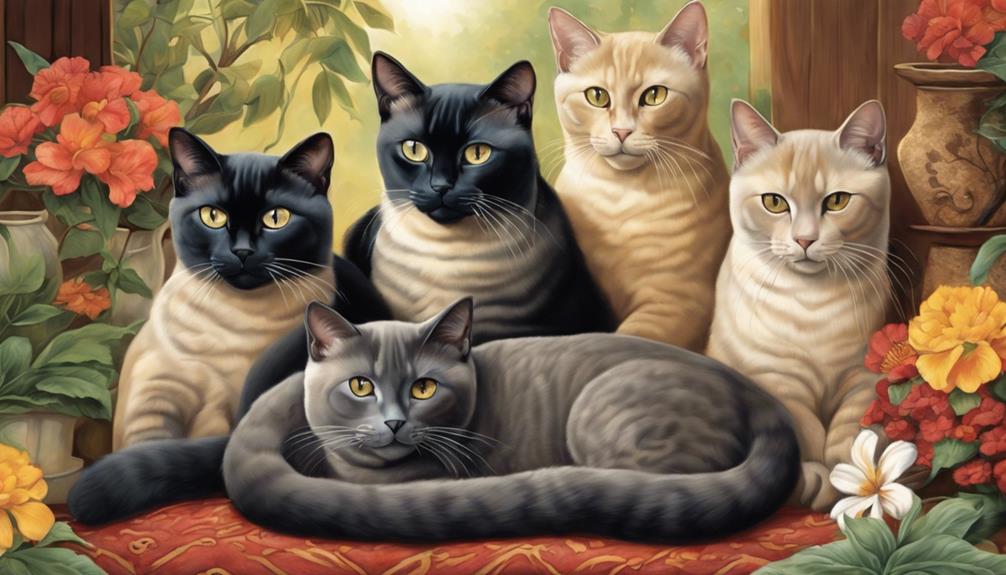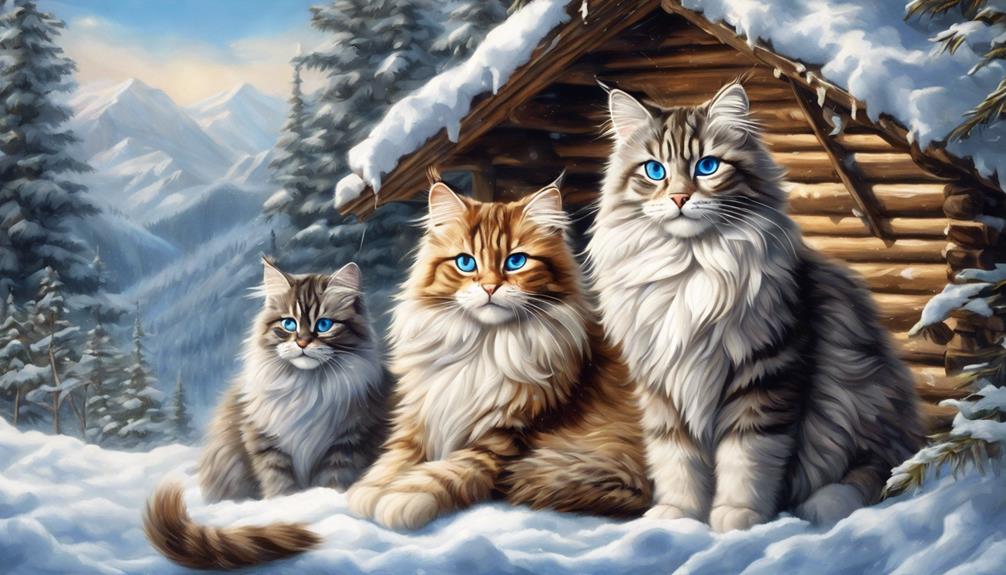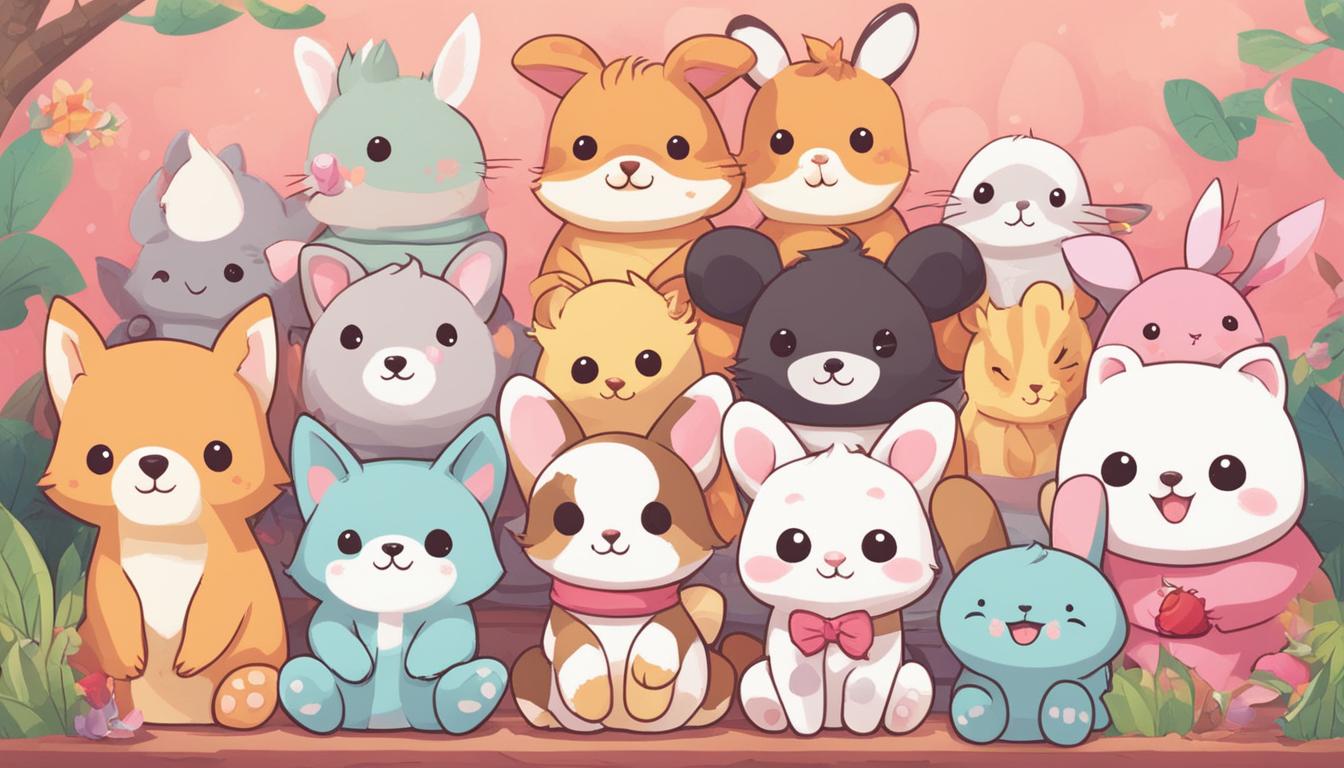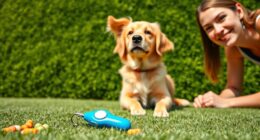Animals live in packs mainly to boost survival and efficiency. By foraging together, they cover more ground and gather resources faster. More eyes mean better protection from predators. Social bonds form through cooperative behaviors, which can help in mating. Plus, sharing tasks like caring for young enhances stability. This group living often leads to stronger kin support. If you want to uncover deeper insights into their fascinating social structures, there's much more ahead to explore.
Key Takeaways
- Group living enhances foraging efficiency, as multiple individuals can cover more ground and find food more effectively.
- Social interactions in packs increase opportunities for mating and strengthen social bonds among individuals.
- Cooperation within packs provides increased vigilance against predators, improving overall safety for members.
- Altruistic behaviors, such as alarm calling, protect kin and enhance survival, driven by kin selection.
- Traveling in packs reduces movement costs and conserves energy, making it a more efficient strategy.
The Benefits of Group Living
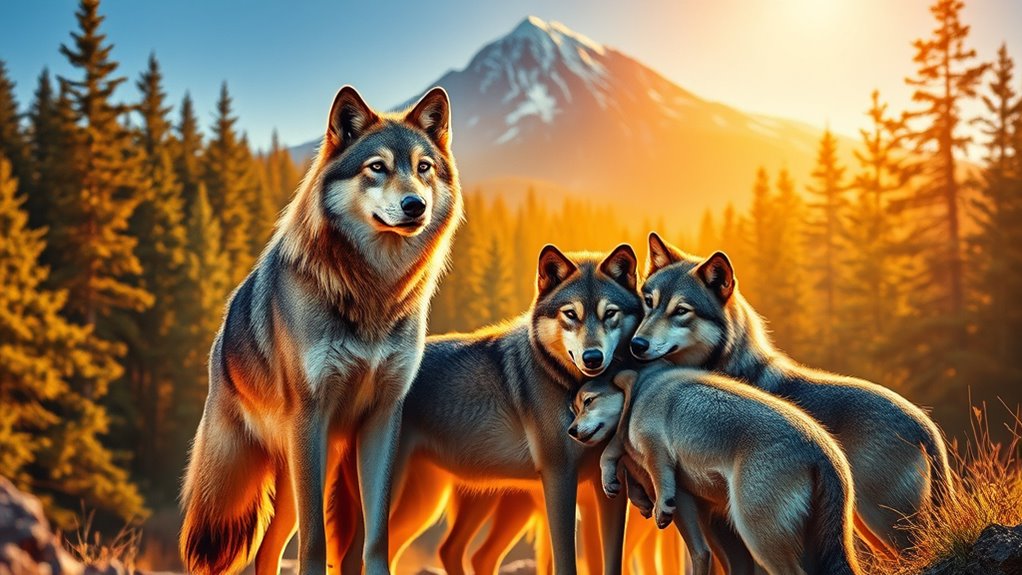
When you think about animals living in packs, it's clear that group living offers several advantages. One major benefit is foraging efficiency; multiple individuals can cover more ground and share valuable information about food sources. This teamwork leads to increased resource acquisition.
Additionally, having more "eyes" in a group enhances vigilance against predators, allowing you to detect threats more quickly and reduce the risk of predation. Group living also promotes social interactions, increasing your chances of encountering potential mates.
Plus, by traveling together, you reduce movement costs and conserve energy, benefiting from the group's collective efforts. Overall, these advantages make it easier for animals to thrive in their environments.
Altruism and Cooperative Behavior

Although it might seem counterintuitive, many animals engage in altruistic behaviors that enhance the survival of their group. Take ground squirrels, for instance; their alarm calling may put them at risk but protects their kin.
Similarly, meerkats practice cooperative feeding, fostering strong bonds within their social groups. These cooperative interactions encourage a culture of mutual assistance, where individuals expect that their selfless acts will be reciprocated in times of need.
Robert Trivers proposed that such behaviors are driven by this expectation, reinforcing group cohesion.
Even in less social species like baboons, you'll find cooperation aimed at improving group fitness. Kinship plays a vital role here, as animals are more likely to help relatives, strengthening their shared genetic legacy.
The Role of Kin Selection

When you think about kin selection, consider how genetic relatedness shapes social behavior in animal packs.
By helping relatives, individuals increase their chances of passing on shared genes, which boosts their indirect fitness.
This strategy often leads to cooperative breeding, where members prioritize the well-being of their kin over their own reproduction.
Genetic Relatedness Benefits
Understanding the benefits of genetic relatedness reveals why many animals choose to live in packs, as this connection often drives individuals to engage in altruistic behaviors for the sake of their relatives.
Kin selection plays an essential role here; when you share genetic material with others, you're more likely to help them thrive. This is evident in cooperative breeding, where individuals forego personal reproduction to assist in raising siblings, enhancing the survival of shared genes.
According to William Hamilton's rule, the benefits of such altruistic behavior must outweigh costs, especially in stable groups where frequent interactions foster kinship.
Ultimately, genetic relatedness not only inspires these acts but also shapes the social structures and dynamics within animal communities.
Indirect Fitness Gains
Living in packs often brings significant indirect fitness gains through kin selection. When you look at family groups, you'll notice that living organisms often engage in altruistic behaviors, enhancing their own genetic success.
Here are three key ways kin selection impacts pack dynamics:
- Genetic Relatedness: Helping relatives increases the chances of shared genes being passed on, as outlined by Hamilton's rule.
- Cooperative Breeding: In some species, individuals assist in raising siblings, ensuring that their kin thrive and ultimately benefit from shared resources.
- Social Structures: Kin selection shapes social behaviors, promoting cooperation among individuals who share genetic ties, which is vital when packs look for food together.
These indirect fitness gains encourage animals to form strong, supportive packs, enhancing survival for all involved.
Eusociality in Animal Societies

Eusociality is a fascinating social structure where individuals in a species work together for the benefit of the whole group, often sacrificing their own reproduction.
You'll see this in action with ants, bees, and termites, where cooperative living enhances survival and efficiency.
Understanding the benefits and examples of eusociality can give you deeper insight into how these animal societies thrive.
Definition of Eusociality
In the animal kingdom, eusociality stands out as one of the most intricate forms of social organization, where individuals cooperate in caring for offspring and share responsibilities across generations.
You'll find eusociality mainly in species like ants, bees, wasps, and termites.
Here are three key features that define this social structure:
- Cooperative Care: Different types of individuals work together to raise young, often sacrificing their own reproductive opportunities.
- Overlapping Generations: Multiple generations live together, enhancing support and survival.
- Reproductive Division of Labor: A few individuals focus on reproduction while others engage in various supportive roles.
This complex living arrangement showcases the remarkable ways animals living in these societies enhance their collective survival through kin selection and cooperation.
Benefits of Cooperative Living
Animals that form cooperative societies enjoy numerous advantages that greatly enhance their survival and success.
In eusocial groups like ants and bees, individuals often forgo personal reproduction to specialize in tasks, boosting overall efficiency. This division of labor means more resources are available for the colony, improving foraging and raising young.
Kin selection plays an essential role, as members are more inclined to help relatives, ensuring the survival of shared genes. Cooperative breeding, though rarer in vertebrates, also aids in raising young by pooling resources and efforts among related individuals.
These benefits—enhanced vigilance against predators, teamwork in finding food, and shared care of offspring—ultimately increase the likelihood of survival for everyone in the group.
Examples in Nature
While many species exhibit social behaviors, eusociality stands out for its remarkable complexity and efficiency. In these societies, individuals cooperate in raising young, share reproductive responsibilities, and often live in overlapping generations.
Here are three key examples of eusociality in nature:
- Ants: In ant colonies, most members are workers that sacrifice their own reproduction to support the queen and guarantee the colony's survival.
- Honeybees: Honeybee colonies display intricate roles, with larvae receiving special nutrition to determine their futures as queens or workers.
- Prairie Dogs: These mammals practice cooperative breeding by helping relatives raise their young, enhancing their overall fitness through kin selection.
Eusocial behavior showcases the intricate balance of cooperation and survival in the animal kingdom.
Cooperative Breeding Dynamics

Cooperative breeding dynamics reveal fascinating social structures where individuals contribute to the upbringing of offspring, often related to them. In these systems, helpers may delay their own reproduction to gain valuable parenting experience, which can boost their future success.
Kin selection plays an essential role, as investing effort in raising relatives enhances indirect fitness through shared genes. While less common among vertebrates than social insects, species like African wild dogs, meerkats, and certain birds display cooperative breeding, with group members dividing tasks efficiently.
Environmental factors, such as resource availability and predation risk, influence these dynamics, as individuals weigh the benefits of helping against the option of independent breeding. This cooperation ultimately enhances the survival rates of young in challenging environments.
Future Directions in Social Behavior Research
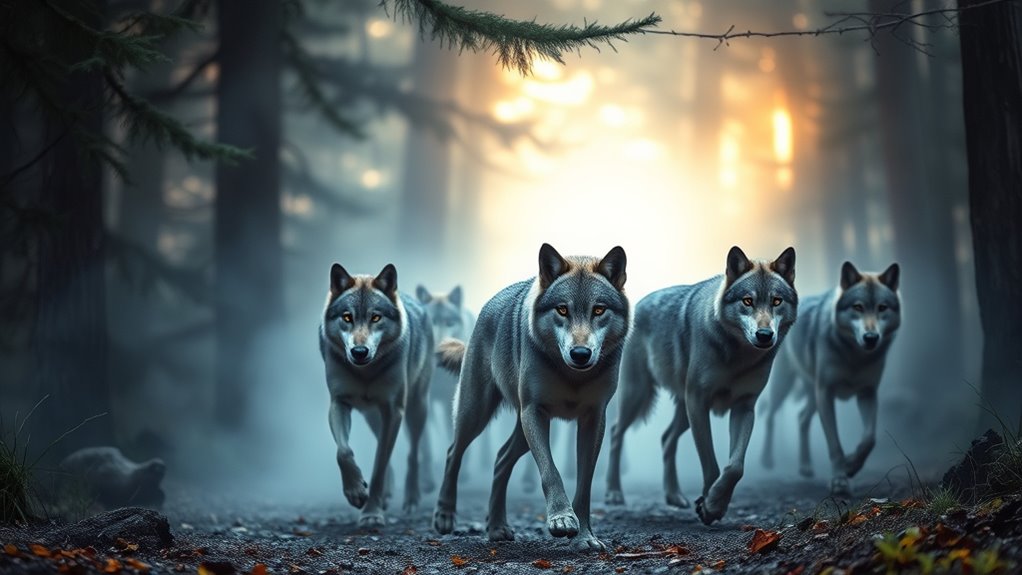
Understanding cooperative breeding dynamics sets the stage for exploring future directions in social behavior research.
As researchers dive deeper, they'll leverage new genomic tools to uncover the genetic mechanisms behind cooperative behavior in various species.
Here are three key areas to watch:
- Genetic Structure: Investigating how genetic relatedness shapes altruism and group living within animal societies.
- Environmental Influences: Examining how environmental factors interact with kin selection to influence social dynamics in invertebrates and vertebrates.
- Cost-Benefit Analyses: Analyzing the trade-offs of group living versus solitary behaviors to understand decision-making in social interactions.
These studies will enhance our grasp of the intricate web of factors driving sociality and cooperative behavior in the animal kingdom.
Frequently Asked Questions
Why Do Some Animals Live in a Group?
You might notice that some animals live in groups to enhance their chances of survival. By banding together, they can forage more efficiently and keep a watchful eye out for predators.
While there are benefits, like increased vigilance and cooperative behaviors, group living also comes with challenges, such as competition for resources.
Ultimately, you'll see that these animals weigh the advantages and disadvantages to decide if group life suits them best.
Why Would an Animal Live in a Group Instead of Its Own?
Why would you choose to brave the wild alone when a group offers safety in numbers?
Living in a group enhances your chances of spotting predators and finding food. You can share resources, making foraging easier and more efficient.
Plus, there's the social aspect—more mates and cooperative breeding opportunities.
Weighing the benefits, you'll find that the warmth, protection, and shared knowledge of a group often outweigh the risks of solitude.
How Do Pack Animals Avoid Inbreeding?
Pack animals avoid inbreeding by establishing territories that limit mating opportunities with close relatives.
You'll notice younger individuals often leave their natal packs to join new groups, promoting genetic diversity. Additionally, they may prioritize mating with genetically unrelated partners, enhancing their offspring's survival.
In some species, like lions, unrelated individuals form coalitions, which further decreases inbreeding risks.
Social hierarchies also play a role, as dominant members control access to mates, fostering genetic diversity.
Are There Any Animals That Live Alone?
Yes, there are plenty of animals that thrive on their own. For instance, big cats like leopards depend on their stealth to hunt solo in their territories.
Grizzly bears and polar bears usually live alone, except when raising cubs.
Even reptiles like the Komodo dragon prefer solitary life, only coming together for mating.
You'll also find owls, like the great horned owl, establishing individual territories for hunting and nesting.
It's fascinating how diverse their lifestyles are!
Conclusion
Just like a flock of birds soaring together through the sky, animals that live in packs find strength in unity. They protect one another, share resources, and guarantee their young thrive. In this intricate dance of life, each member plays an essential role, showcasing the beauty of cooperation. As we continue to explore these social dynamics, we uncover the deeper connections that bind them, reminding us that sometimes, it truly takes a village to flourish.



